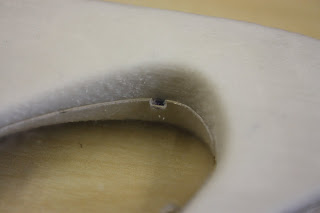








The goal behind this project was to combine the unique aspects of both the laser cutter and 3D printer to create 4 variations of a joint system. The benefits of the laser cutter are in its ability to rapidly cut out 2d shapes regardless of the piece's shape or uniqueness. The 3D printer allows for "no assembly required" rapid prototyping. It is also unique in its ability to form almost any shape imaginable.
In looking at the full scale possibilities of these two processes we found the D-shape 3D printer which is capable of printing small buildings in their entirety. Taking note of this printer's capabilities and the architectural proposals of Zaha Hadid and other contemporary designers traditional methods of joining materials no longer make sense.

We used this project as an exploration into new types of joints which can be fabricated in response to new materials, methods, and design ideas.
We created a 3D print component representing a wall or ceiling assembly and used laser cut Plexiglas to represent the glass panels that would fill in the voids. The first joint uses L-shaped brackets printed as a part of the mass in combination with matching precut holes on the glass panel which hold the panel in place. The second joint uses the same L-shaped brackets and matching holes except the panel is offset slightly not filling the entire void leaving a small air space. The third joint uses pairs of pockets printed into the 3D structure which allow small metal tubes to slide in and pin the panel in place. The final joint condition uses a lip which the panel fits against in combination with single pockets (and pins) printed into the structure to hold the panels in place.
- Beatty - Holland -
image from www.d-shape.com
No comments:
Post a Comment